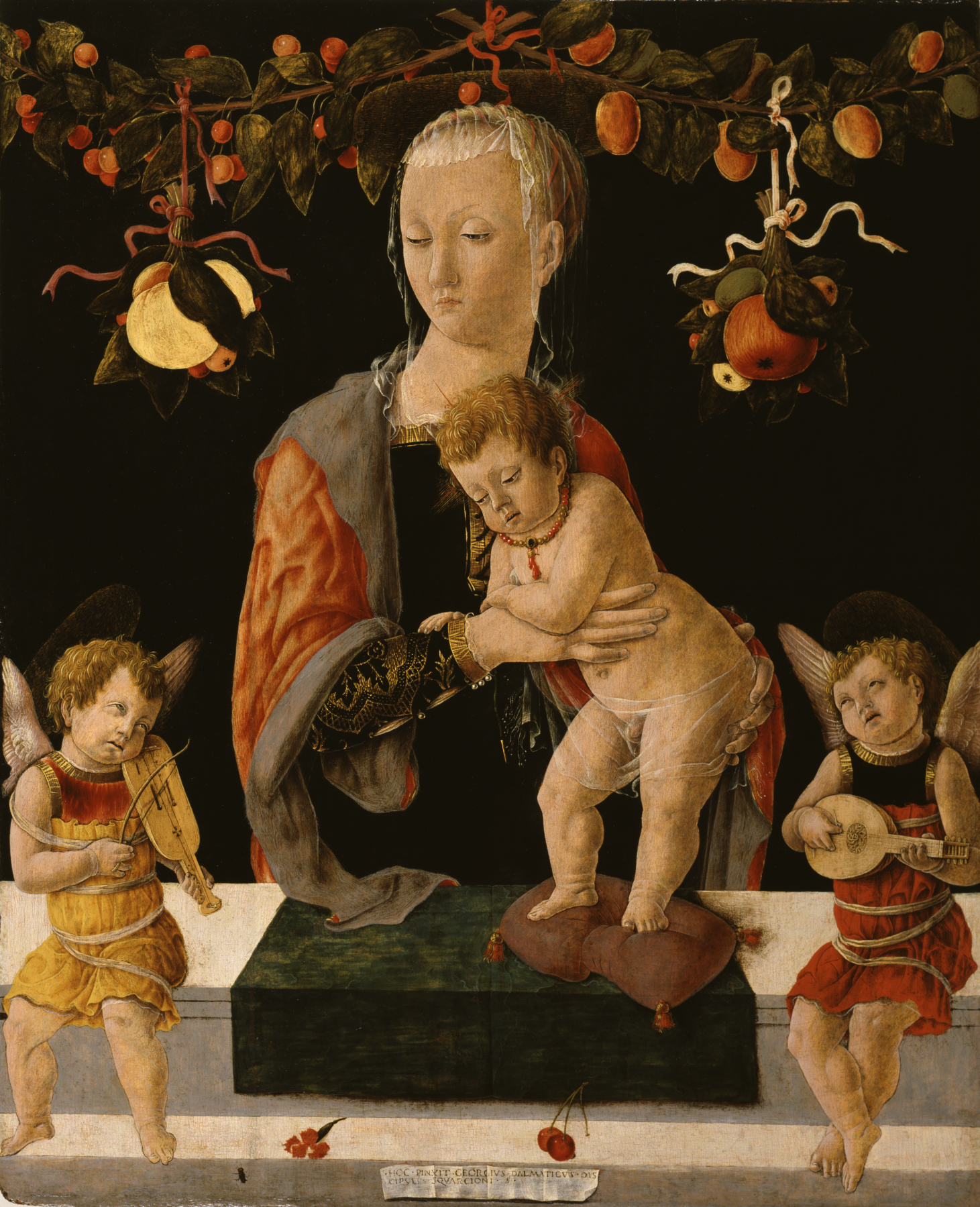Madonna and Child with Angels
(Renaissance Europe )
The subject of the Madonna and Christ Child, shown close up from behind a parapet, is a very common one for a devotional painting such as this. An interesting feature in this example is the coral necklace worn by Christ. Coral was believed to keep the devil away and many babies at this time had a coral teething ring or necklace.
Schiavone was born in Dalmatia (present-day Croatia) and immigrated to northern Italy, where he studied in Padua in the workshop of Francesco Squarcione, the same painter with whom both Dario di Giovanni (37.1178-1180) and Marco Zoppo (37.544) trained. On the cartellino (little paper) in the foreground, Schiavone proudly identifies himself as the disciple of this master, known especially for encouraging an appreciation for ancient Roman art in his students. The garlands at the top, heavy with fruit, are colorful, playful versions of the ones he would have seen on Roman sarcophagi or funerary altars in Paduan collections.
Inscription
Provenance
Provenance (from the French provenir, 'to come from/forth') is the chronology of the ownership, custody, or location of a historical object.
Arnold Seligmann, Rey and Co., Munich and New York, 1922 [listed in Zeri: Italian Paintings in the Walters Art Gallery: I as A. S. Drey]; Robert Lehman, New York, 1924 (?) [mode of acquisition unknown]; Arnold Seligmann, Rey and Co., New York, 1925; Henry Walters, Baltimore, 1925, by purchase; Walters Art Museum, 1931, by bequest.
Exhibitions
| 2002 | A Renaissance Gem Revealed: Petrarch's Triumphs Disbound. The Walters Art Museum, Baltimore. |
Conservation
| Date | Description | Narrative |
|---|---|---|
| 12/28/1936 | Treatment | cleaned; coated; other |
| 1/19/1971 | Treatment | stabilized; loss compensation; examined for technical study |
| 1/19/1971 | Treatment | loss compensation; other |
| 4/9/1984 | Treatment | other |
| 5/31/1985 | Treatment | cleaned; stabilized; coated; loss compensation |
| 3/17/1987 | Treatment | loss compensation |
| 10/28/1993 | Treatment | stabilized; loss compensation |
| 9/19/2005 | Loan Consideration | examined for loan |
| 10/1/2005 | Treatment | cleaned; coated |
Geographies
Italy, Padua (Place of Origin)
Measurements
Painted surface H: 27 3/16 x W: 22 5/16 in. (69 x 56.7 cm); Panel H: 27 9/16 x W: 22 5/16 x D: 1 in. (70 x 56.7 x 2.5 cm)
Credit Line
Acquired by Henry Walters, 1925
Location in Museum
Accession Number
In libraries, galleries, museums, and archives, an accession number is a unique identifier assigned to each object in the collection.
In libraries, galleries, museums, and archives, an accession number is a unique identifier assigned to each object in the collection.
37.1026


